Herzog & de Meuron design first Swiss motorway church
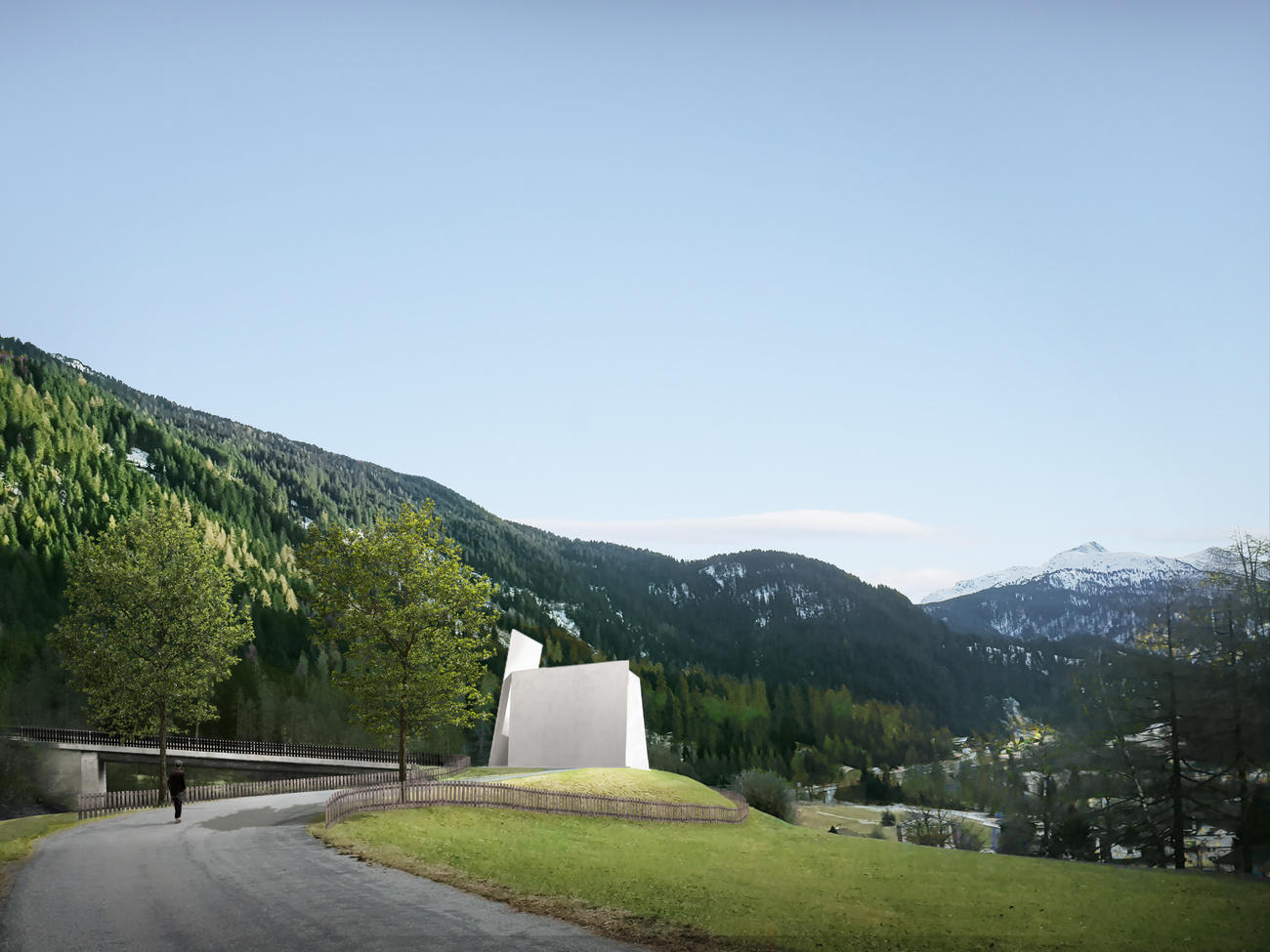
Swiss architects Herzog & de Meuron have unveiled the design of the country’s first motorway church. Drivers on the A13 in eastern Switzerland will be able to pull off and visit the “petrol station for the soul”, as the local priest put it.
The concept of “prayer pitstops” is well established in neighbouring Germany, where a network of 46 such buildings attracts about a million motorists a year.
“They’re driving, they’re thinking about their life, and these places give them a space to process their feelings and maybe release their emotions,” Jens Köhre, priest for the parish of AndeerExternal link in canton Graubünden, told news website QuartzExternal link.
Motorway churches are particularly attractive for their anonymity, he said. “It’s for people who don’t want to pray with a community. We need new spaces for this type of spirituality. We need spaces for people to pray on their own.”
At a time when more and more Swiss are turning their backs on organised religion, the proposed motorway church, reached after a short walk, will be open to everyone both day and night.
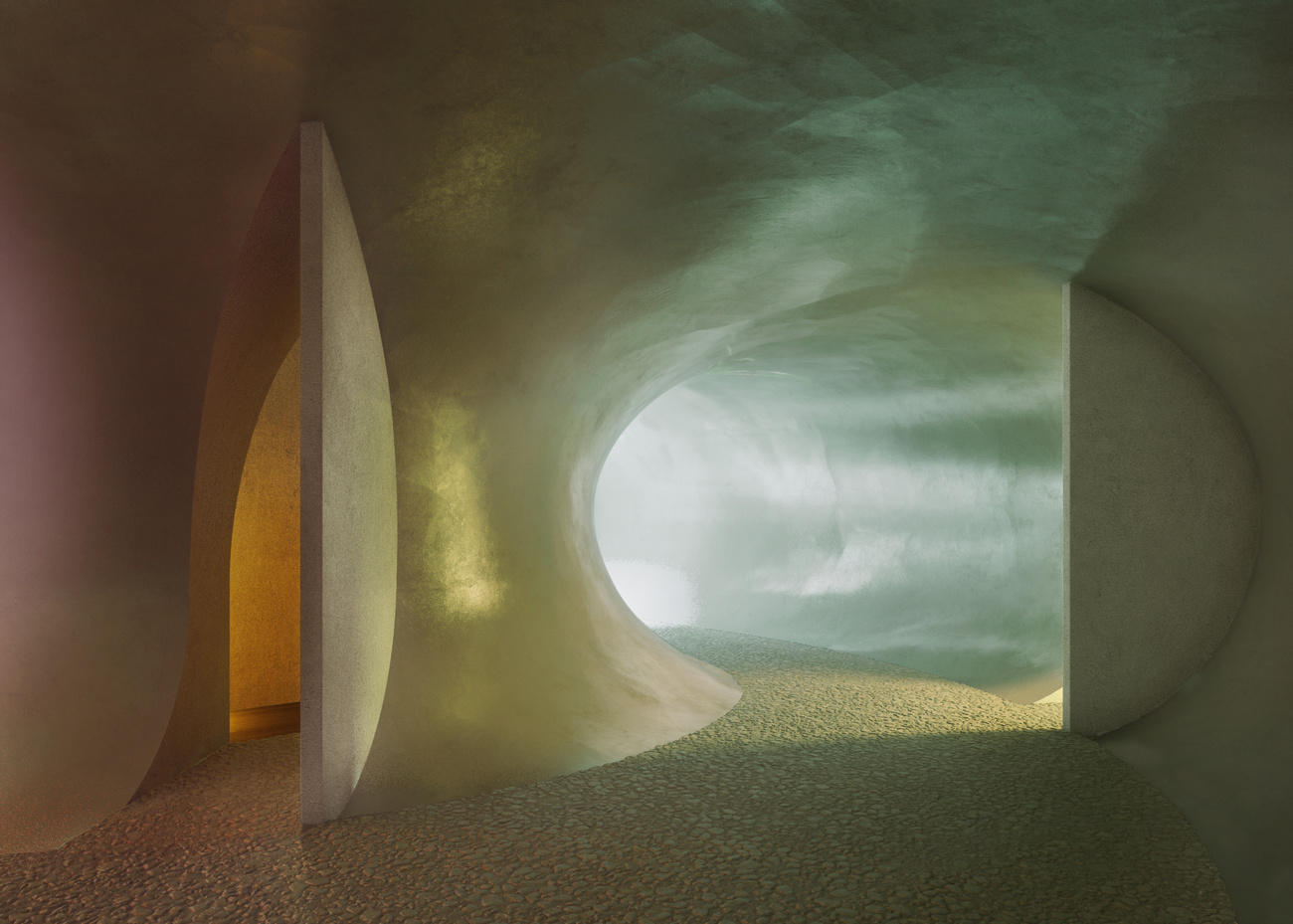
“The idea for the chapel in Andeer had to emerge from the site alone, from the location, from the road,” Herzog & de Meuron said in a statementExternal link. “And we did not want to work with explicit religious signs or symbols, even less with Christian symbols such as a cross or representations of Christ.”
Basel-based architects Jacques Herzog and Pierre de Meuron, known for eye-catching works such as the Beijing National Stadium and the Elbe Philharmonic Hall in Hamburg, said the idea of the “Autobahnkirche” follows on from the concept of the medieval wayside chapel.
Although the building will be the first in Switzerland to be called a motorway church, a motorway chapelExternal link exists by the A2 in Erstfeld, canton Uri.
‘Like the human ear’
The proposed church on the A13, which connects the village of Andeer with the city of Chur in the north and the San Bernardino Pass in the south, comprises four white ten-metre walls that lean against and support each other at the same time.
“Because of the location next to a motorway, we knew we would have to deal with the noise,” Herzog & de Meuron said. “Not just a single door separating inside and outside acoustically and spatially but a sequence of spaces, of different and distinct chambers – like the human ear.”
From the 130sq/m ground-level church, a snail-shaped flight of stairs leads to an underground sequence of three chapels, with an additional floor area of 150sq/m.
“The deeper you go, the weaker the sounds from the motorway and the stronger the sound of your own footsteps,” the architects said.
“Finally, when you reach the last room, strong daylight streams into the heart of the chapel and you see a panoramic view of the landscape, the village, and the lush green meadows and woods. Perception of the vegetation is heightened by the complementary red of a room-height pane of tinted glass. The sun, setting in the evening, shines through the red glass into this last portion of the chapel, which leads directly to the landscape outside.”
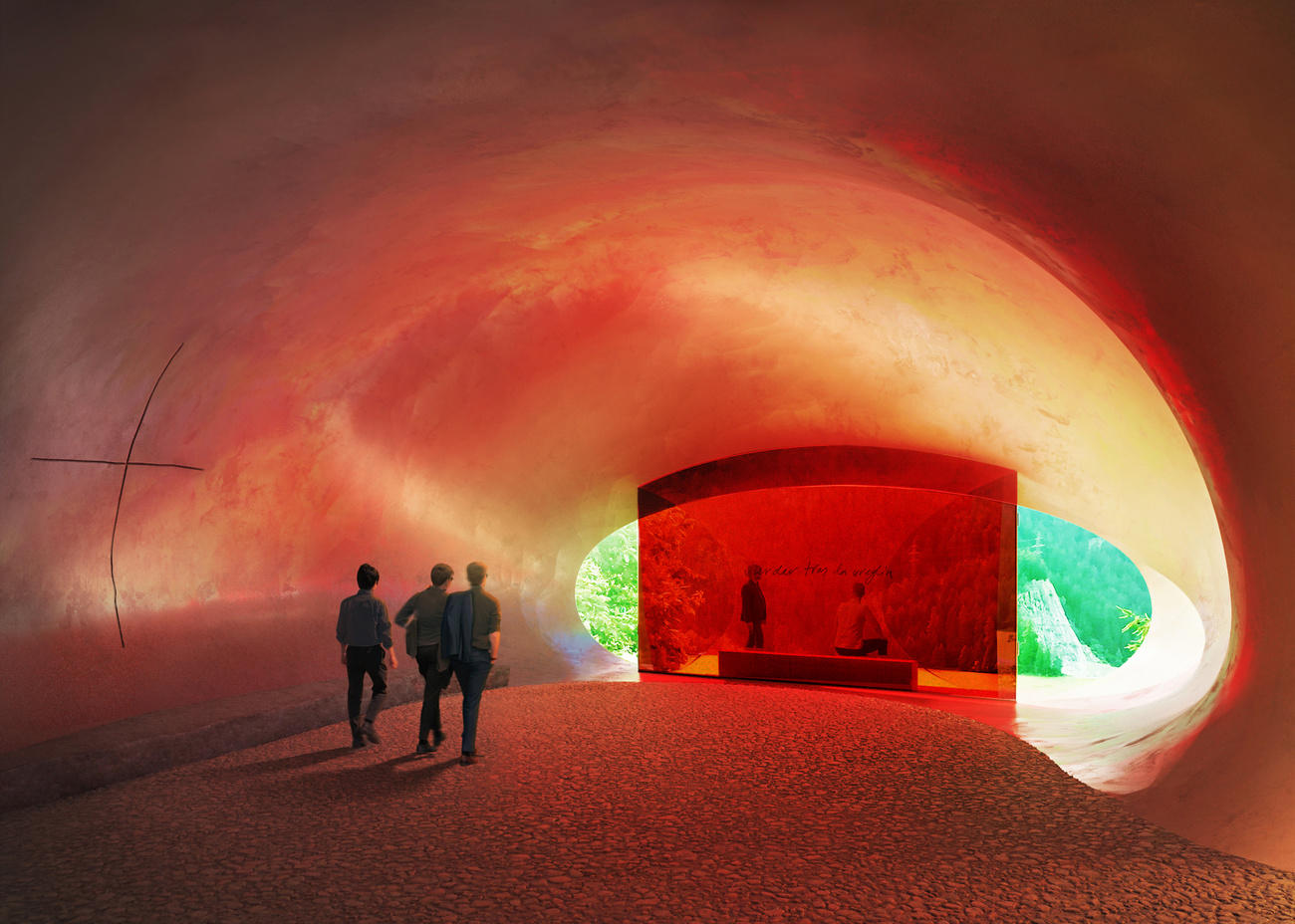
The motorway church will not host any religious services, although Köhre says there will be a Bible, crucifix and votive candles, in addition to a book where visitors can write their thoughts.
It will be funded by private donations, without any public money. A foundation will look after the project and, if everything runs according to plan, Köhre hopes to break ground in 2022 or 2023.

In compliance with the JTI standards
More: SWI swissinfo.ch certified by the Journalism Trust Initiative










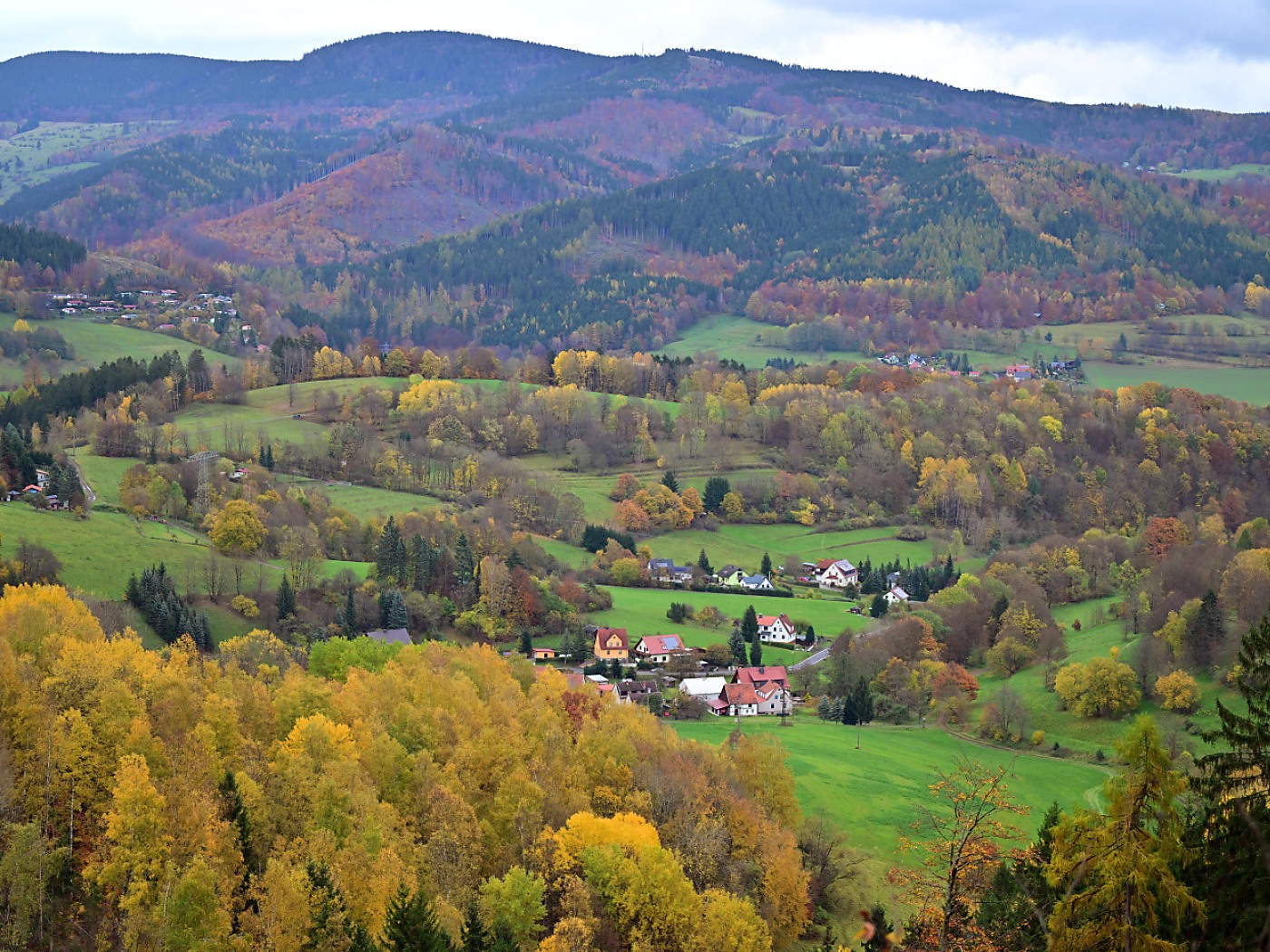






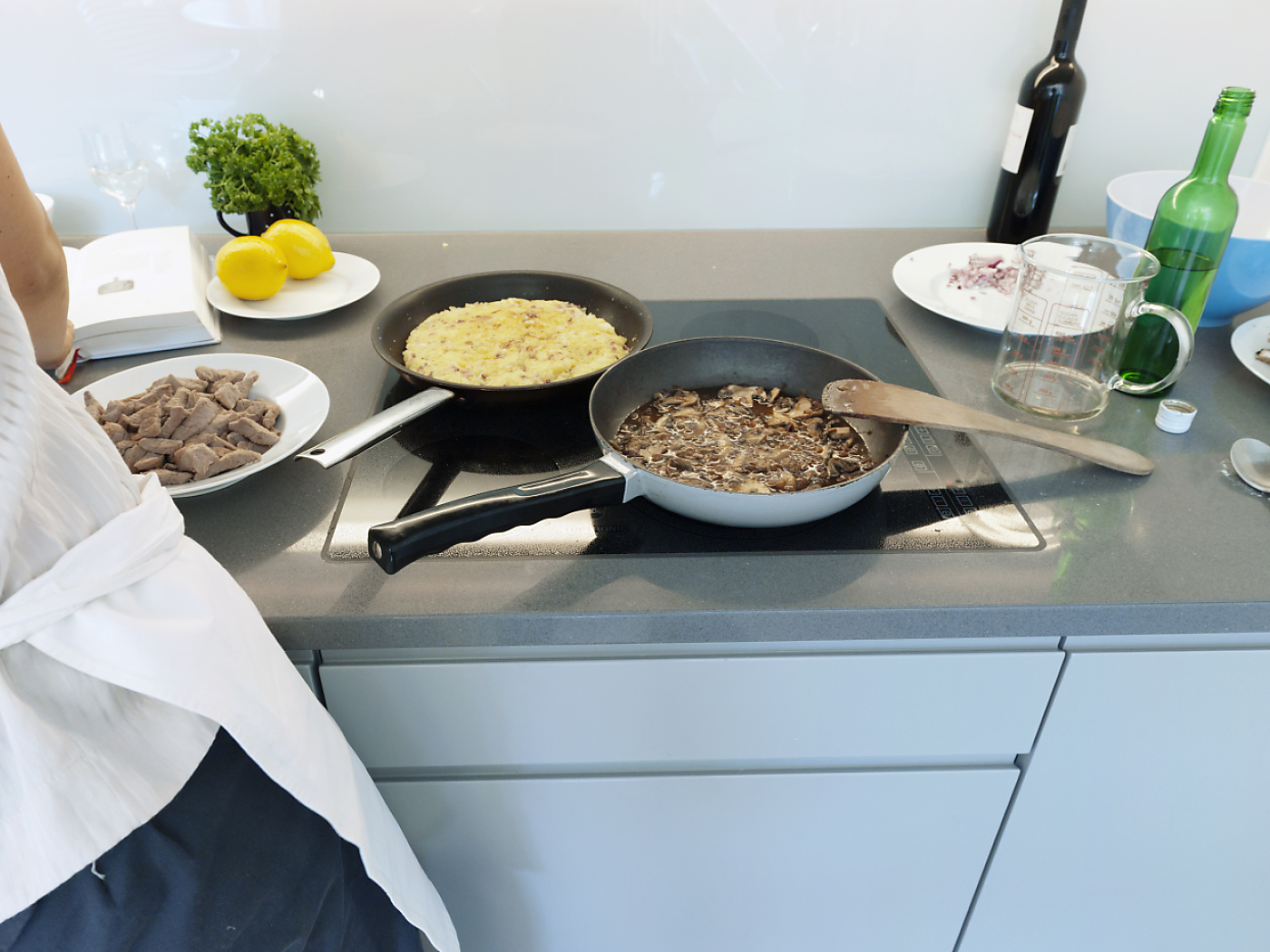


You can find an overview of ongoing debates with our journalists here . Please join us!
If you want to start a conversation about a topic raised in this article or want to report factual errors, email us at english@swissinfo.ch.